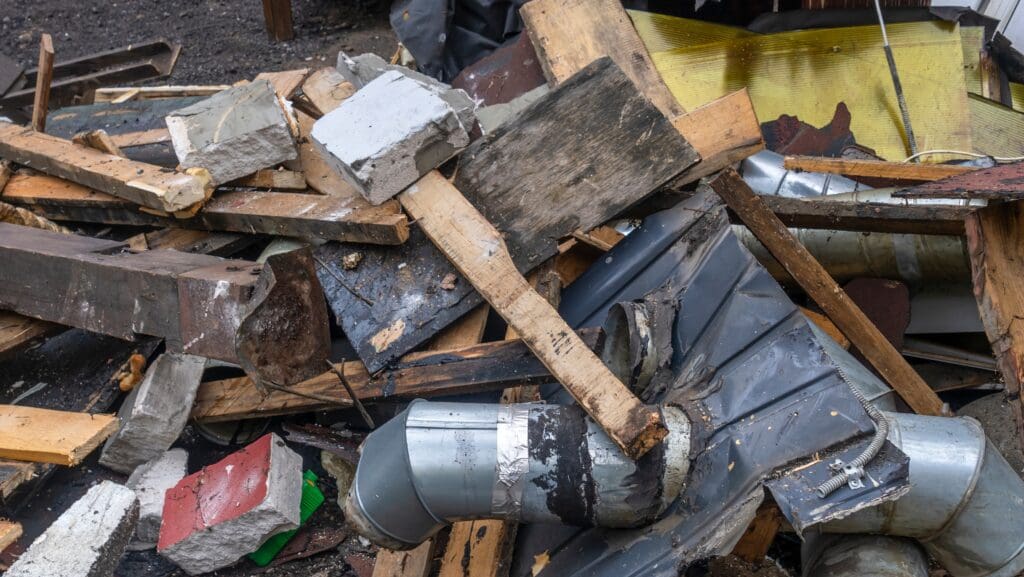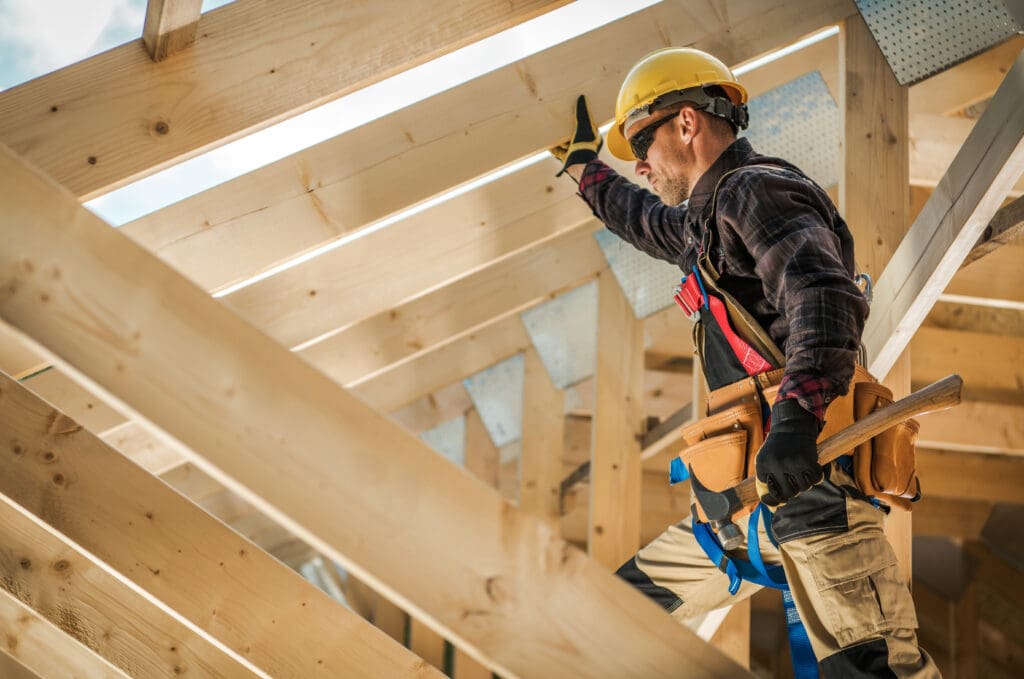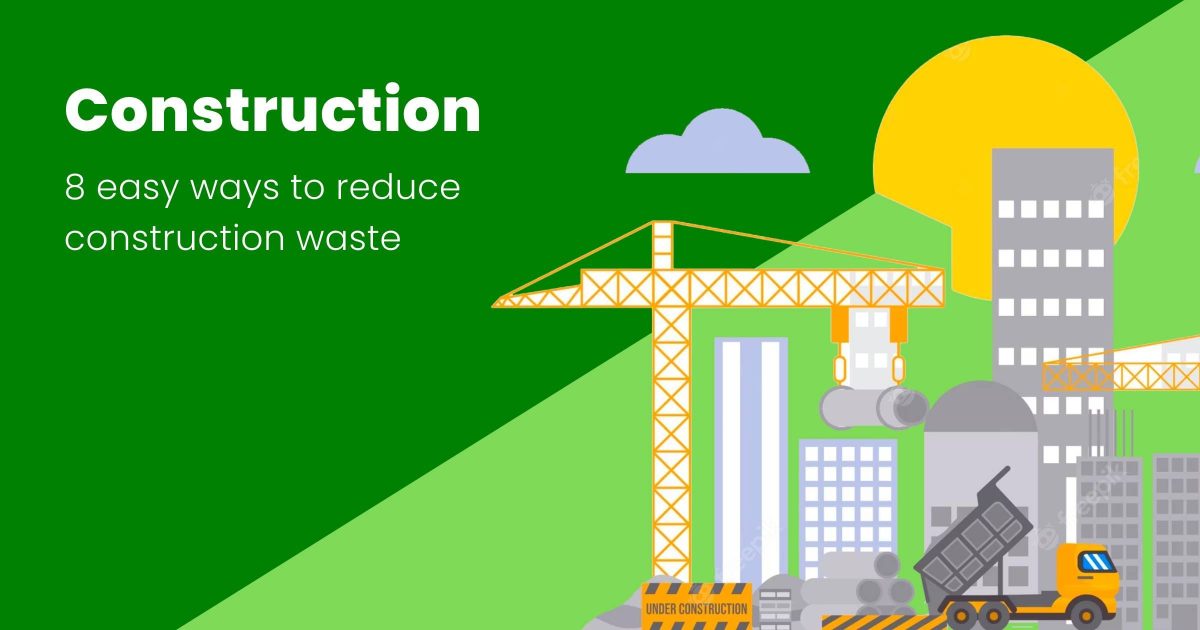10 easy methods on how to reduce construction waste.
As much as construction waste management is big business for rubbish removal companies like Go Easy Rubbish, naturally, and it is only natural for you to know how to reduce construction waste as quickly and effectively as possible.
But what can go in hard rubbish in Australia?
In this short guide, we’ll delve into everything you need to know about building rubbish collection. From what is classified as debris to how you can book a collection all year round for your building site, join us as we set you on your way to becoming the local building rubbish geek!
The best methods on how to reduce construction waste are:
- Reduce construction mistakes
- Order the right amount of materials
- Get the right-size materials for the job
- Store your materials properly
- Recycle and reuse materials
- Try out new building methods
- Choose building products with minimal packaging
- Work with your suppliers
- Implement lean construction practices
- Educate and involve your team
1. Reduce Construction Mistakes
Minimising construction mistakes is vital to reducing waste and avoiding unnecessary expenses. Mistakes such as inaccurate measurements, improper installations, or flawed designs can lead to the need for rework and additional material usage. Investing in skilled labor and providing comprehensive training can improve workmanship and reduce the likelihood of errors. Additionally, implementing regular quality checks and encouraging open communication among team members can help identify potential issues early on, allowing for timely corrections and waste prevention.
2. Order the right amount of materials
Accurate material estimation is key to reducing waste and optimising resource utilisation. By leveraging advanced software tools, construction professionals can calculate the required quantities of materials more precisely. These tools take into account project specifications, dimensions, and potential waste factors, ensuring that the right amount of materials is ordered. Close collaboration with suppliers is also essential, as they can provide valuable insights into material availability and suggest alternative options that align with the project’s needs, further reducing waste.
3. Purchase the right size materials
Choosing materials in appropriate sizes and dimensions can significantly reduce construction and renovation waste. By sourcing materials that closely match the project’s requirements, contractors can minimise offcuts and leftover pieces that often end up discarded. Furthermore, employing prefabricated components allows for a more efficient use of materials, as these elements are manufactured to exact specifications, reducing on-site cutting and waste generation.
4. Store your materials safely
Proper storage and handling of building materials is a giant step towards how to reduce construction waste and can prolong their lifespan and prevent unnecessary waste. Keeping materials in covered and secure areas protects them from weather conditions, moisture, and potential theft, reducing the need for replacements. Regular inspections of stored materials help identify any signs of damage or deterioration, allowing for timely action and preventing wastage due to unusable materials.
5. Recycle and reuse materials
Implementing a comprehensive waste management plan that prioritises recycling and reuse is a crucial aspect of sustainable construction practices. On-site waste segregation allows for easy sorting of recyclable materials such as metal, concrete, wood, and plastics. Partnering with local recycling facilities ensures that these materials are processed and reintroduced into the supply chain. Additionally, construction professionals can explore opportunities to reuse salvaged materials from demolition or repurpose waste materials for non-structural applications, promoting a circular economy and reducing the need for virgin resources.

6. Explore new building methods
Innovation in building methods plays a significant role in waste reduction and sustainability. Modern construction techniques such as prefabrication, modular construction, and 3D printing enable precise manufacturing of components off-site, minimising material waste and accelerating construction timelines. Prefabrication, for instance, allows for precise material optimisation, as components are manufactured to exact dimensions, leaving little room for excess material generation.
7. Buy products with minimal packaging
Making conscious choices when selecting construction materials can contribute to waste reduction. Opting for products with minimal or sustainable packaging reduces the amount of waste generated from excess wrapping, boxes, or plastics. Bulk purchasing of materials also decreases packaging waste and may lead to cost savings, benefiting both the environment and the project’s budget.
8. Work with your suppliers
Building strong and sustainable relationships with suppliers can create a positive impact on waste reduction efforts. Especially, when the constuction industy is generating more than 12 million tonnes of waste per annum. So, engage with suppliers who share the commitment to sustainability and encourage them to adopt eco-friendly practices in their operations. Collaborating with suppliers on waste reduction initiatives and exploring the potential for material take-back programs fosters a sense of shared responsibility for sustainability and waste reduction throughout the supply chain.

9. Implement lean construction practices
Lean Construction principles focus on efficiency and waste reduction throughout the entire construction process. Whether you are working in a commercial waste environment or household rubbish setting, by streamlining workflows, eliminating unnecessary steps, and optimising resource allocation, Lean Construction helps minimise material waste and project delays. Adopting a Lean mindset encourages constant evaluation and improvement, resulting in more sustainable construction practices and better project outcomes.
10. Educate and involve your team
Educating the building team about how to reduce construction waste, the importance of waste reduction and sustainability creates a shared sense of responsibility towards the environment. Involving team members in decision-making processes empowers them to suggest and implement waste reduction ideas on-site. Regular training sessions on waste management, real estate removal structure and sustainable practices keep the team informed about the latest advancements and reinforce the project’s commitment to sustainability.
By incorporating these contextually expanded strategies into construction projects, professionals can effectively know how to reduce construction waste, enhance sustainability, and set a positive example for the industry’s future. By taking collective actions, the construction sector can contribute significantly to building a greener and more environmentally conscious world.
The Final Word
Learning how to reduce construction waste and disposing of hard rubbish properly is absolutely vital for maintaining a clean and sustainable living environment; not only for you but your neighbours too. By understanding your local council’s guidelines on hard rubbish and by contacting private waste removal companies such as Go Easy Rubbish to dispose of your wares quickly, you can ensure that unwanted bulky items are disposed of professionally and in an environmentally safe manner.
Remember, donating items that can be another way on how to reduce construction waste and help contribute to a greener future for Australia. After all, one person’s trash is another person’s treasure. So, consider whether your old units or items really deserve to wind up in the trash.
Contact us or give us a call at 0432 644 510 today to find out when and how we’ll get rid of your rubbish, or send us pictures of your waste and receive a no-obligation quote. We’re open seven days a week and even offer same-day removals, so when you want it gone – we’ll get it gone. For more information learn about the origins of Go Easy and our ulitmate guide to rubbish removal.





